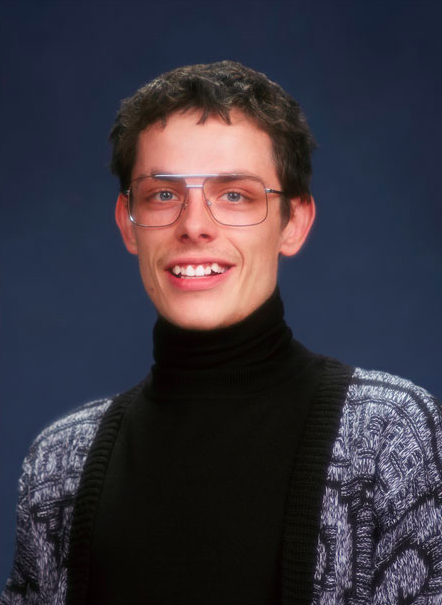To my ostentatious teenage self, a new pair of shoes was somehow equal to a degree of psychological growth in my personal life. The juvenile assumption was that if I acquired new sneakers, cognitive stability and validation would soon follow (naïve, yes— but that’s the teenage mentality for you.) There was always some subliminal suggestion from pop culture, from advertising, that if I managed to purchase just the right pair—principally attached to pop-punk, as was my taste at the time—it would lead to a “better self.” If not that, then at least a more realised one.
Of course, there was the challenge of balancing that ambition with my actual conditions. When you’re running on a meager two-shift-a-week-at-the-local-grocery-store income, brand-new shoes (at least, the kind I wanted) felt like a distant luxury. Lucky was the owner of many sneakers.
This is as much the case now as it was then. The season’s it-sneakers are more financially unattainable than ever, as luxury houses make their bid for the lucrative streetwear market with four-figure pairs. At the same time, sneakers have gotten louder than ever: speaking to their wearer’s background, interests, pay bracket, and (perhaps) identity. Far more than a functional item, today’s sneakers are primarily a means of expression. The lifestyle sneaker is no longer an afterthought, or a finishing touch, but a central distinction between a good look and a tragic one. If it was possible, I’m sure sneaker fanboys would get dressed sneaker-first (unfortunately, slim jeans just won’t allow it). Some of this month’s most sought after are Gucci’s Flashtrek trainers (at $1,865), giving Balenciaga’s Triple-S some competition. Compare this to just two cycles ago, where it might have been Y-3’s.
++++++
When I catch the eyes of a motionless crypto-cyber-goth leering down at me from the store window of a Sydney Camper store, I’m taken aback. There is no text on this image, no reference to a subculture of days past. I look again, and see a whole hoard of uniquely styled and configured bodies, eyes fitted with custom contact lenses, photographed alongside a perfectly compatible shoe design. These characters, who make up Camper’s Spring/Summer 2018 campaign, were imagined by Romain Kremer and photographed by Daniel Sannwald. And while the characters were undoubtedly inspired by the footwear, it looks just as likely that Camper created shoes for them—so specific are their visual idiosyncrasies.

Camper Spring/Summer 2018.

Each fictional personality is vastly different from the rest of the cohort. There’s Drift, with a mullet that’s as 2018 as it is 1988; Brooke, power-suited for the boardroom; Helix, who looks like a close associate of a young Steve Jobs; and silver-haired explorer Edo, the most fantastical of the bunch. You couldn’t necessarily identify exactly what world or scene these characters belong to, but Camper places them nebulously in the late 80s and early 90s. And despite their 80s inspiration, I feel as if any one of them would feel right at home on an extremely online landscape—say, your Instagram feed. I get the sense you could pass any one of them in the street after momentarily seeing their likeness pop up on your explore page, suddenly doubling back for a second glance—was that Drift? (It’s worth noting that Camper have been dreaming up cohorts of characters for eight seasons now).
It was the distinct lack of tribalism or subcultural alignment that drew me into the images. Though they were inspired by the not-so-distant past, they speak to a increasingly critical, ad-literate generation, who’ve never experienced subcultures first-hand as they existed in the 20th century. The characters aren’t specifically punks, hippies, or hipsters—they aren’t even ‘cool’ in the way advertising usually expresses that idea. (In fact, Runner another makes an effective stand-in for your dorky high school crush). The campaign imagery doesn’t offer some spurious promise of belonging-to-the-pack, instead, it’s something quite the opposite: Camper has compiled characters who seem like outsiders themselves.
It’s attractive, because it reminds me of the creative reflex of multimedia-savvy young people to adopt alter-egos, rather than aspire to ‘better selves’ (as we, or I, grew up doing). It’s a peculiar branch of design, but existing in our fraught digital context often involves a fairly non-negotiable degree of ‘Character Design’ in order to protect, or distance our truer selves from the web—not unlike the character creation in an MMORPG video game.
++++++

Camper Spring/Summer 2018.

Advertising, as we know it in the contemporary sense, is becoming more and more intrusive, less interested in the valuable insights of good design, and more interested in immediacy, clickability and psychological warfare. With no text or brand messaging, Camper leave their characters to carry their advertisements. It lends them a refreshing quality: they’re here to beautify our aesthetic landscapes, instead of polluting them.
Rather than emphasising the unruly promise of “improvement”, Camper’s imagery indicates a growing movement, an appropriation of selfhood and creation that is interested in artfulness, strangeness, and tapestries of the spirit.
Explore the Spring/Sumer 2018 campaign here.
Art Direction: Romain Kremer
Photography & Video: Daniel Sannwald
Makeup: Isamaya Ffrench
Styling: Anna Trevelyan
Hair: Charlie Le Mindu
Set Design: Gary Card
DOP: Nicolai Niermann
